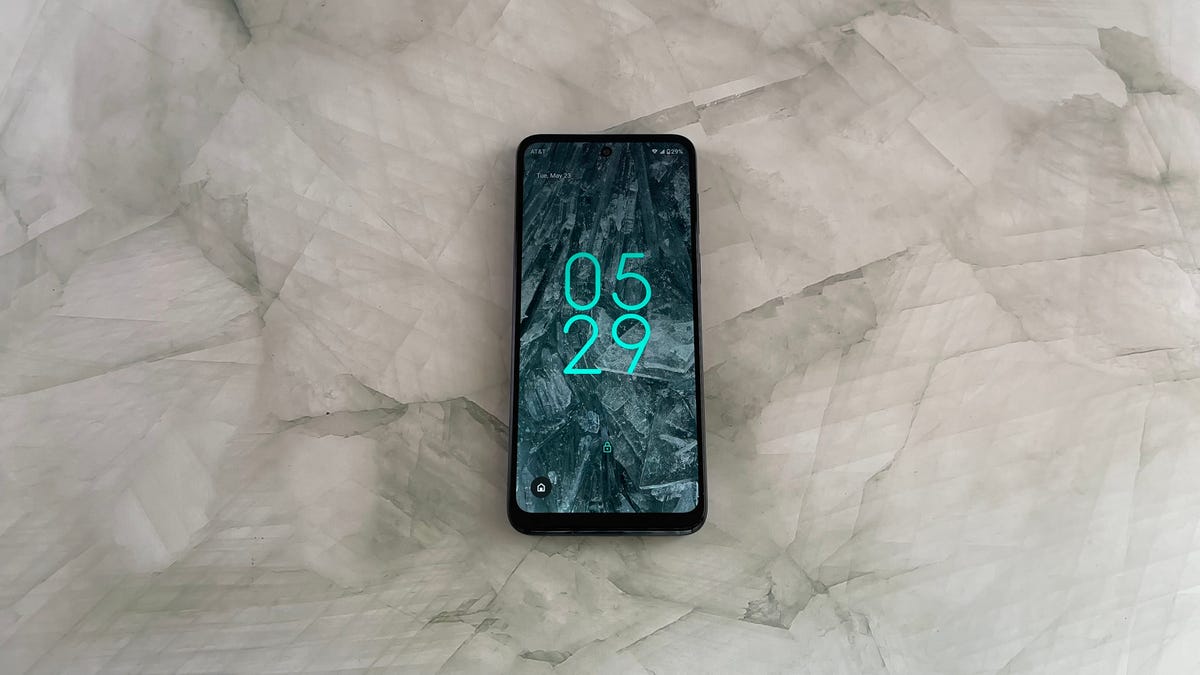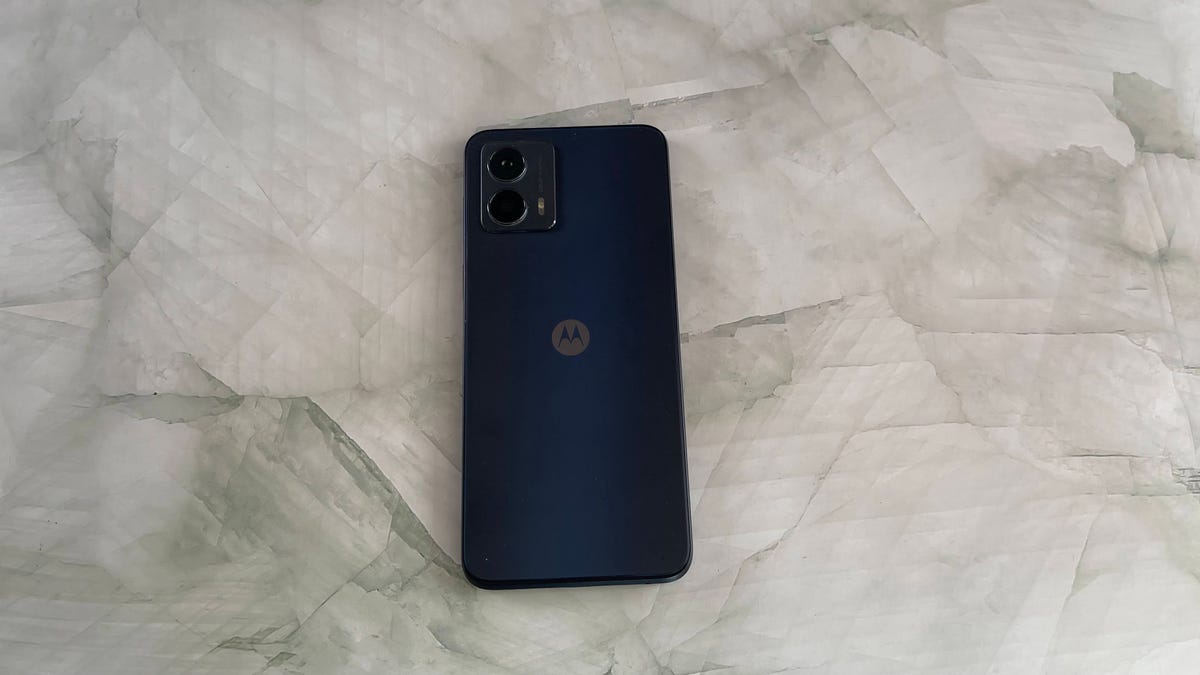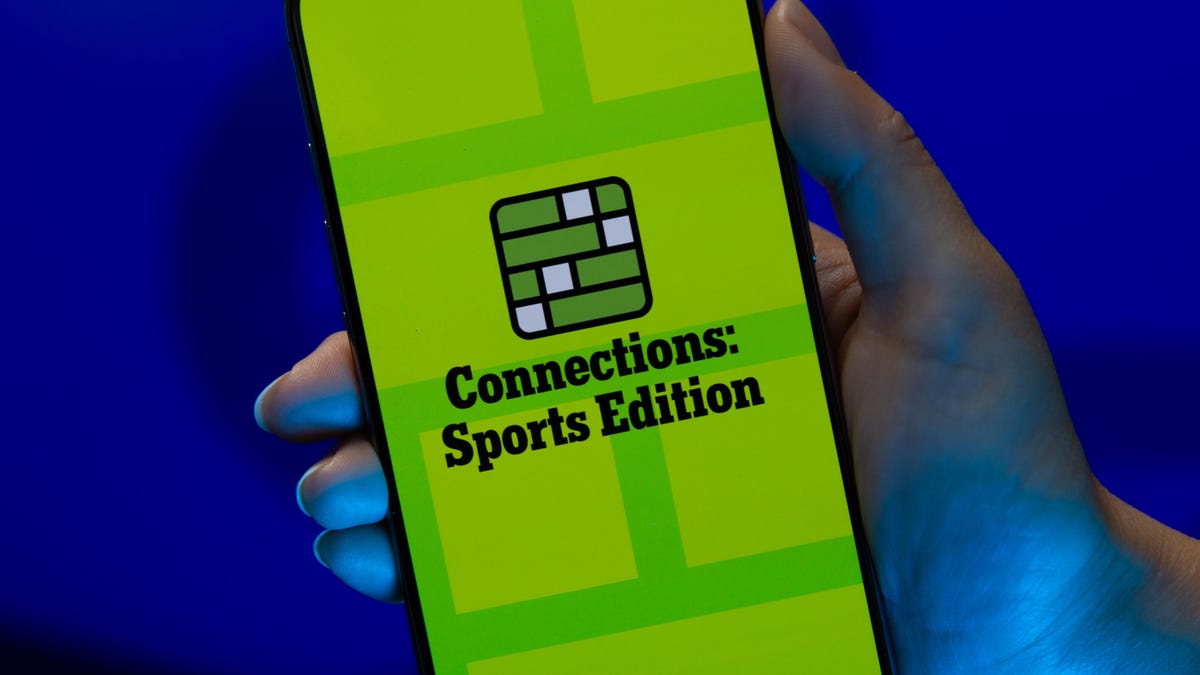Technologies
Moto G 5G (2023) Hands-On: Are the Trade-Offs Worth the Lower $250 Price?
The Moto G gets reinvented with a cheaper price, and it shows.

Advertiser Disclosure
The $250 Moto G 5G marks a big reimagining of the phone since last year’s more-expensive $400 model. This year’s Moto G 5G scales back on storage and cameras to help hit its lower price but steps up the refresh rate on its 6.5-inch display to a smooth 120Hz. All that, while keeping the 5,000mAh battery and its roughly two-day battery life, should make the phone a decent value for its price.
The Moto G 5G has 4GB of memory, runs on a Snapdragon 480 Plus 5G chip and comes with 128GB of storage. This is a decent amount of storage space for this price and can be expanded up to 1TB with a microSD card. The phone’s stereo speakers and headphone jack are also quite nice for when I watch videos or listen to music. It ships with Android 13, and like other Moto G phones, will get only one major software update to Android 14 along with three years of security updates
I spent a few days with the Moto G 5G so far, and, while it looks and feels like it’s fallen down a few rungs of the price tier, the phone might meet enough essential needs to satisfy most people. However, by no means does it punch above its weight. The Moto G 5G has 4GB of memory, runs on a Snapdragon 480 Plus 5G chip and comes with 128GB of storage. This is a decent amount of storage space for the price and can be expanded up to 1TB with a microSD card. The phone’s stereo speakers and headphone jack are also quite nice for when I watch videos or listen to music. It ships with Android 13, and like other Moto G phones, will get only one major software update to Android 14 along with three years of security updates.

The Moto G 5G has a main 48-megapixel camera and a 2-megapixel macro camera.
However, when testing other features, I can’t help but compare this phone to the slightly more expensive $300 Moto G Power 5G — which includes quite a bit more for that extra $50. For instance, the Moto G 5G’s 6.5-inch display runs at a 720p resolution. Even though that screen animates smoothly with its 120Hz refresh rate, I find that the lower-resolution makes photos and videos look rather plain. The Power 5G runs at a 1,080p resolution at the same refresh rate, and in my review of that phone the display was a particular highlight.
Performance also seems to take a noticeable hit during my early tests, which could be attributable to the phone having 4GB of memory compared with the 6GB available on the Power 5G. Often when I test phones, during casual use I play games while taking calls or texting. I find that when a call comes through while I’m playing a game, in this instance Marvel Snap, that the game needs to reload itself after I answer the call. Lighter multitasking, however, has been fine, for instance reading news articles while I’m listening to music has not led to any noticeable issues.
The Moto G 5G also moves down from three cameras on last year’s model to two, with this year’s phone including a 48-megapixel main camera and a 2-megapixel macro camera. This is an area that cheaper phones often struggle, and my early photos taken by the Moto G 5G don’t change that opinion. Like other cheaper phones, photos taken in outdoor environments or indoor locations with good lighting come out OK, but without much detail.

Outdoor photo taken on the Moto G 5G of the Public Theater.

Indoor photo taken on the Moto G 5G at a Twister Air demo event.
The 8-megapixel front-facing camera is similarly serviceable, but photos look a little plain.

Front-facing camera photo taken on the Moto G 5G.
I’ll reserve judgment after I have taken the Moto G 5G through more photo scenes, but my early indoor photos are comparable to the Moto G Power 5G — which is to say that they are fairly blurry and lack detail. Photos are usable but more for quick group chats and social posts.

A cocktail photo taken at a friend’s house on the Moto G 5G.
The Moto G 5G’s 5,000mAh battery, however, easily lasted two days during my early tests, matching the performance that I saw on the Moto G Power 5G and the $200 Moto G Stylus. As we continue to test phones in the $300 price range, it has been comforting to see the 5,000mAh battery become a standard feature in 2023. However, I hope Motorola finds a way to speed up charging, as the Moto G 5G’s 15-watt max speed takes about 90 minutes to charge from 4% to 88%. It’s not awful, but is slow when compared with the 33-watt charging included on comparable phones like the OnePlus N300 and OnePlus N20.
Motorola has been releasing several phones over the last few weeks, with the Moto G 5G arriving alongside the $800 Motorola Edge Plus. The Moto G 5G appears to be offering a middle ground between the 4G-only Moto G Stylus and the Moto G Power. The main question as I continue testing is whether this phone’s trade-offs are worth the lower price, or if someone searching for a deal should consider paying slightly less for the Stylus or more for the Power.
Technologies
China Cracks Down: Fake Experts Banned From Social Media
China is going all-in with strict social media policies surrounding educational topics.

Misinformation is tough to decipher in this day and age of social media. Over in China, the internet regulator has announced that it is further enforcing laws prohibiting social-media influencers from sharing advice on finance, medicine, law and education on social media unless they have the professional credentials to back up their content.
China’s social media platforms, such as Bilibili, Doyin (China’s TikTok) and Weibo, must follow the new regulations set down by the Cyberspace Administration of China on Saturday.
Creators will have to share studies to support their information and reveal whether they used AI to generate any of their content.
Don’t miss any of our unbiased tech content and lab-based reviews. Add CNET as a preferred Google source.
CAC is also banning advertising for supplements and medical services, and similar posts that pose as educational content to sell a product. Prior to this regulation, China declared a two-month campaign to eliminate pessimistic, hostile or violent content.
China has been criticized for its attempt to control online content and public opinion. But it wouldn’t be the first country to enforce laws surrounding social media policies.
Spain implemented its own influencer law in 2024, which required influencers on YouTube, Instagram and TikTok earning over 300,000 euro to be transparent about partnerships with brands and sponsorships. Influencers must also adhere to copyright laws and restrictions on targeting of minors with content related to tobacco, alcohol and medications.
A study conducted by the United Nations Educational, Scientific and Cultural Organization found that only 36.9% of influencers verify that the content that they share is true before posting.
That’s especially troubling since a 2025 Pew Research Center report found that one in five young American adults receives their news through TikTok.
A representative for UNESCO didn’t immediately respond to a request for comment.
Technologies
Today’s NYT Connections: Sports Edition Hints and Answers for Oct. 30, #402
Here are hints and the answers for the NYT Connections: Sports Edition puzzle for Oct. 30, No. 402.

Looking for the most recent regular Connections answers? Click here for today’s Connections hints, as well as our daily answers and hints for The New York Times Mini Crossword, Wordle and Strands puzzles.
Today’s Connections: Sports Edition is a tough one. I guess I don’t know my pitches very well. If you’re struggling but still want to solve it, read on for hints and the answers.
Connections: Sports Edition is published by The Athletic, the subscription-based sports journalism site owned by The Times. It doesn’t show up in the NYT Games app but appears in The Athletic’s own app. Or you can play it for free online.
Read more: NYT Connections: Sports Edition Puzzle Comes Out of Beta
Hints for today’s Connections: Sports Edition groups
Here are four hints for the groupings in today’s Connections: Sports Edition puzzle, ranked from the easiest yellow group to the tough (and sometimes bizarre) purple group.
Yellow group hint: Join our group.
Green group hint: Get away from me!
Blue group hint: Throw it over the plate.
Purple group hint: Like Nicholas.
Answers for today’s Connections: Sports Edition groups
Yellow group: Ways to add someone to a team.
Green group: Lose a would-be tackler.
Blue group: Softball pitches, with -ball.
Purple group: Nick ____.
Read more: Wordle Cheat Sheet: Here Are the Most Popular Letters Used in English Words
What are today’s Connections: Sports Edition answers?
The yellow words in today’s Connections
The theme is ways to add someone to a team. The four answers are draft, free agency, trade and waivers.
The green words in today’s Connections
The theme is lose a would-be tackler. The four answers are break, shake, shed and slip.
The blue words in today’s Connections
The theme is softball pitches, with -ball. The four answers are curve, drop, fast and rise.
The purple words in today’s Connections
The theme is Nick ____. The four answers are Chubb, Mangold, Nurse and Sirianni.
Technologies
How to Redeem Every Pokemon Legends: Z-A Mystery Gift Code and Reward
Prepare for your city-spanning Pokemon adventure with some extra goodies. These free mystery gift codes and rewards are available for you to grab today.

After 12 years, it’s finally time for Pokemon players to head back to the Kalos region in Pokemon Legends: Z-A, the newest game in the popular monster-catching franchise. If you’ve missed the worldwide capital of Mega Pokemon, fairy-type Pokemon and a whole bunch of baked bread, now’s the time to jump back into the world of pocket monsters.
The Switch 2’s first Pokemon game seems a bit scarier this time around. Though the beautiful Lumiose City projects safety and security, recent unexplained rampages from wild Mega Pokemon threaten the peace.
Don’t miss any of our unbiased tech content and lab-based reviews. Add CNET as a preferred Google source.
Between unearthing the cause of this phenomenon and taking down competitors in the Z-A Royale Pokemon battle ladder, there’s a lot of work to do in the Kalos region. You’ll need special partners to get the job done — and there are some special Mystery Gifts that have just the powerful pals you’re looking for.
Even though Pokemon Legends: Z-A is still a fairly new game, there are already three Mystery Gift codes you can redeem right now. These will unlock a rare Pokemon and tons of items that will help you prepare for competitive mode, which is especially important if you want to unlock limited-time Mega Stones that are walled behind ranked player-versus-player battling.
All active Mystery Gifts for Pokemon Legends: Z-A
While some Pokemon Legends: Z-A promo codes are uniquely tied to Nintendo purchases, we’ve gathered every free code and redemption requirement in one place for you here.
Below is a chart that contains every active Mystery Gift code for Pokemon Legends: Z-A, what it unlocks and its expiration date:
Active Pokemon Legends: Z-A Mystery Gifts
| Reward | Code or alternative redemption requirements | Expiration date |
|---|---|---|
| Ralts holding Gardevoirite | No associated code. Select «Get via internet» in the Mystery Gift menu. | Feb. 28, 2026 |
| 100x Poke Balls | Every code is unique. You can unlock the code for this Mystery Gift by purchasing the digital version of Pokemon Legends: Z-A. The code will be sent to the email associated with your Nintendo account. | March 10, 2026 |
| 3x Fast Balls, 3x Lure Balls, 3x Heavy Balls, 3x Level Balls | Every code is unique. You can unlock the code for this Mystery Gift by purchasing the Mega Dimension DLC. The code will be sent to the email associated with your Nintendo account. | March 10, 2026 |
How to redeem Mystery Gifts in Pokemon Legends: Z-A
If you have Mystery Gift codes to redeem in Pokemon Legends: Z-A, you’re likely eager to grab those rewards as soon as possible. But you need to do a little bit of legwork before unlocking the code redemption menu.
To unlock Mystery Gift functionality, you need to progress through the main story until you reach the third main mission, called A New Life in Lumiose City.
During this mission, you’ll meet Mable, the acting director of the Pokemon Research Lab in Kalos. Once you unlock Mable’s research, a new «Link Play» tab becomes accessible in the pause menu.
Within the Link Play tab, you can redeem Mystery Gift codes — as long as you’re connected to the internet.
What are Mystery Gifts?
Mystery Gifts are a long-running way to reward Pokemon players with extra goodies. The official gift distributions have existed since Pokemon Gold and Silver was released in 1999.
Back then, players needed to have special hardware — like a Game Boy Advance Wireless Adaptor — in order to acquire Mystery Gifts. Newer games make the process much easier, since you need only connect to Wi-Fi in order to access gifts for the Pokemon games on the Nintendo Switch.
While some Mystery Gifts are accessible for free, others are unlocked by promo codes that you’ll have to hunt down through specific means. Mystery Gifts are good ways to gather precious items, add mythical Pokemon to the Pokedex and capture rare shiny Pokemon.
-

 Technologies3 года ago
Technologies3 года agoTech Companies Need to Be Held Accountable for Security, Experts Say
-

 Technologies3 года ago
Technologies3 года agoBest Handheld Game Console in 2023
-

 Technologies3 года ago
Technologies3 года agoTighten Up Your VR Game With the Best Head Straps for Quest 2
-

 Technologies4 года ago
Technologies4 года agoVerum, Wickr and Threema: next generation secured messengers
-

 Technologies4 года ago
Technologies4 года agoBlack Friday 2021: The best deals on TVs, headphones, kitchenware, and more
-

 Technologies4 года ago
Technologies4 года agoGoogle to require vaccinations as Silicon Valley rethinks return-to-office policies
-

 Technologies4 года ago
Technologies4 года agoOlivia Harlan Dekker for Verum Messenger
-

 Technologies4 года ago
Technologies4 года agoiPhone 13 event: How to watch Apple’s big announcement tomorrow
